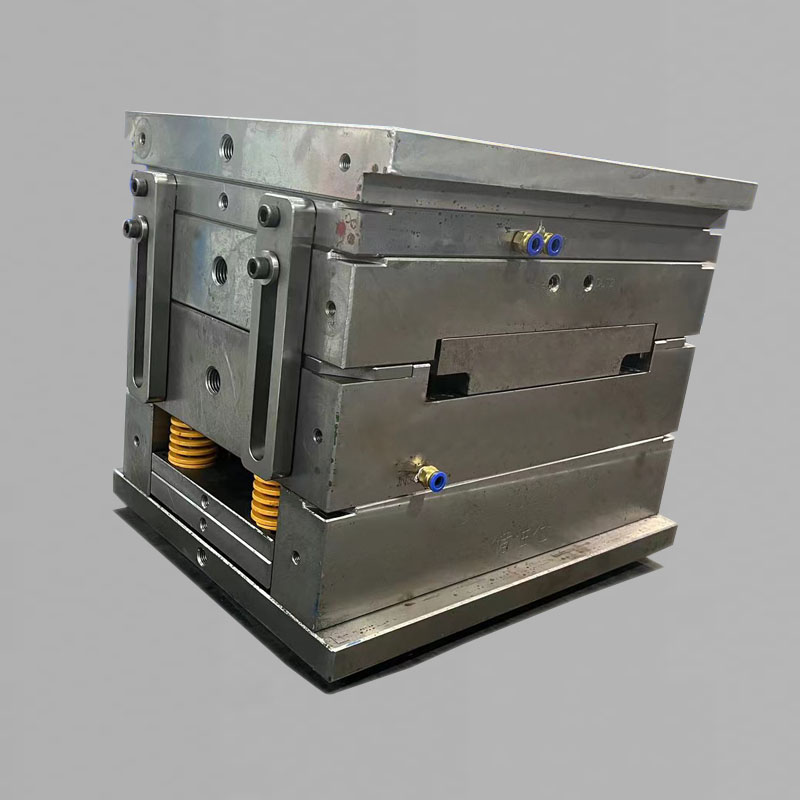Company dynamics
Solve mold design problems in plastic injection molding production
Plastic mold is a key tool for producing plastic products, and its operation process involves complex physical and chemical changes. Problems with plastic molds may lead to reduced production efficiency or even production shutdown, thus affecting the company's production plan and economic benefits. Therefore, classifying and analyzing injection mold problems and their causes is of great significance to ensure the normal operation of the mold and improve the quality of plastic products.

1. Frequently Asked Questions about Plastic Molds
1. Plastic mold damage: Due to repeated high temperature and high pressure, wear, scratches and even cracks will appear on the mold surface.
2. Plastic mold overflow: Because the plastic mold is not closed tightly, the plastic melt overflows from the plastic mold under high pressure, resulting in abnormal shape of the product.
3. Mold sticking of plastic products: Poor demoulding of plastic molds causes plastic products to remain on the mold, affecting the surface quality of plastic products.
4. The plastic mold is stuck: Residues in the plastic mold or plastic decomposition make the plastic mold unable to be opened or closed.
5. Plastic mold cooling problems: Uneven cooling of plastic molds or insufficient cooling time leads to quality problems such as shrinkage and warping of plastic products.
2. Analysis of causes of plastic molds
1. Plastic mold damage:
①Plastic mold material quality issues: The plastic mold material itself is insufficient in strength or has metallurgical defects, such as cracks, slag inclusions, etc.
② Improper use: Improper operation, such as excessive mold closing pressure, causes excessive stress on the mold surface.
③ Insufficient maintenance of plastic molds: Plastic mold repairs and surface treatments, such as grinding and polishing, are not carried out in a timely manner, resulting in increased damage to the plastic molds.
2. Plastic mold flash:
① Plastic mold design issues: The plastic mold design is unreasonable, such as the gate size is too large or too small, resulting in out-of-control plastic melt flow.
② Plastic mold processing problems: Plastic mold processing accuracy is insufficient, such as burrs on gates, exhaust ports, etc., resulting in poor flow of plastic melt.
③ Improper use: Improper operation, such as excessive injection pressure, causing the mold to not close tightly.
3. Plastic product mold sticking:
① Plastic mold temperature problem: The temperature of the plastic mold is too low, which causes the viscosity of the plastic melt to increase and adhere to the plastic mold.
② Plastic product design issues: The design of plastic products is unreasonable, such as the wall thickness is too small, resulting in uneven flow of plastic melt in the plastic mold.
③ Release spring problem: The release spring is damaged or improperly adjusted, causing the plastic mold to be unable to be released smoothly.
4. The plastic mold is stuck:
① Residues in the plastic mold: After the last production, there are plastic residues or impurities in the plastic mold that have not been cleaned up.
② Plastic decomposition: When heated to high temperatures for a long time, plastic decomposes, causing the plastic mold to become clogged.
5. Plastic mold cooling issues:
① Uneven cooling: The design of the plastic mold cooling system is unreasonable, resulting in uneven cooling.
② Insufficient cooling time: The plastic mold is demoulded without sufficient cooling, resulting in unstable quality of plastic products.
3. Solution
1. Plastic mold damage:
① Use high-quality plastic mold materials to improve the damage resistance of the plastic mold.
② Standardize the operation and reasonably adjust parameters such as mold closing pressure.
③ Strengthen the maintenance of plastic molds and conduct surface treatment and repair regularly.
2. Plastic mold flash:
① Optimize the plastic mold design and reasonably set the gate size and location.
② Improve the processing accuracy of plastic molds and ensure that gates, exhaust ports, etc. are smooth and burr-free.
③ Standardize the operation and reasonably adjust parameters such as injection pressure.
3. Plastic product mold sticking:
① Adjust the temperature of the plastic mold to maintain an appropriate temperature to avoid excessive viscosity of the plastic melt.
② Optimize the design of plastic products and reasonably set parameters such as wall thickness to ensure uniform flow of plastic melt.
③ Check the demoulding spring to ensure its normal function and adjust the demoulding force appropriately.
4. The plastic mold is stuck:
① After production, thoroughly clean the residue and impurities in the plastic mold.
② According to the properties and processing conditions of plastics, rationally select plastic varieties and processing parameters to avoid plastic decomposition.
5. Plastic mold cooling issues:
① Optimize the design of the plastic mold cooling system to ensure uniform cooling.
② According to the customized injection molding shape and size, the cooling time should be set reasonably to ensure that the plastic products are fully cooled.
Categories
Blog
Contact Us
Contact: plastic injection molding Company
Phone: +86 181 6575 9852
Tel: +86 755-27164277
E-mail: windward@seaiint.com
Add: Northwest of Huihao Industrial Park, No. 1, Chuangwei Road, Guangming District, Shenzhen

